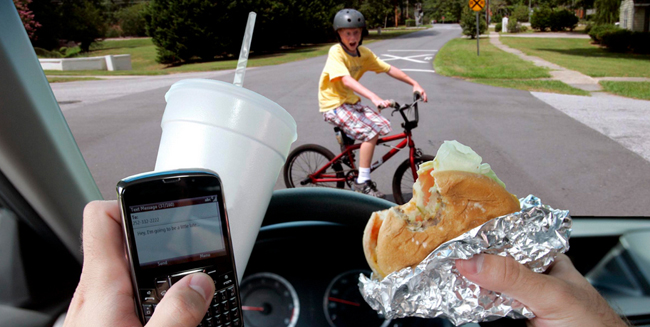

Paying up for distracted driving
From KMS Quarterly, Spring 2017:
If you're reading this on your smartphone, we trust you aren't driving. Auto accidents have been on the rise in recent years, and insurance companies increasingly cite distracted driving as a key factor.
Several major auto insurers reported poorer underwriting results for the fourth quarter of 2016, with crash-related costs outpacing premium increa And were not just talking about fender benders.
The National Highway Traffic Safety Administration reported a 7.2-percent jump in deadly accidents in 2015 and the nonprofit National Safety Council has estimated another 6-percent increase in 2016. At least one insurer, Cincinnati Financial Corporation, reported to its investors last fall that it was seeing many accidents with "no skid marks."
State Farm, the nation's largest auto insurer by market share, conducted a 2015 survey in which 36 percent of respondents admitted to texting and 29 percent to accessing the internet while driving. Perhaps most alarming are the responses from drivers in the 18-29 age group, 64 percent of whom acknowledged texting and 54 percent access the web while driving.
Despite campaigns to stress the danger, those percentages were up significant\y from a similar survey conducted in 2009. Among those respodents, smartphone ownership rose from 52 percent to 88 percent between 2011 and 2015.
There are other factors helping to reverse what had been a notable decline in crash-related payouts by insurers. For example, lower gas prices and the sustained economic recovery have spurred a resurgence in annual miles driven by Americans. But to varying degrees, insurance markets are where we socialize (Le., spread) the cost ofrisky behavior.
Average annual auto premiums rose to an estimated $926 in 2016, having troughed at about $790 in 2009. Another meaningful bump is expected for 2017.
Experts had predicted that a proliferation of vehicles with high-tech, anti-collision gear and other safety features would lower premiums. That may have to wait until those technologies can more fully replace us as drivers. Meanwhile, thank you for pulling over to give this a read. We do want you to be around for our next issue as well!
Published 04-07-17